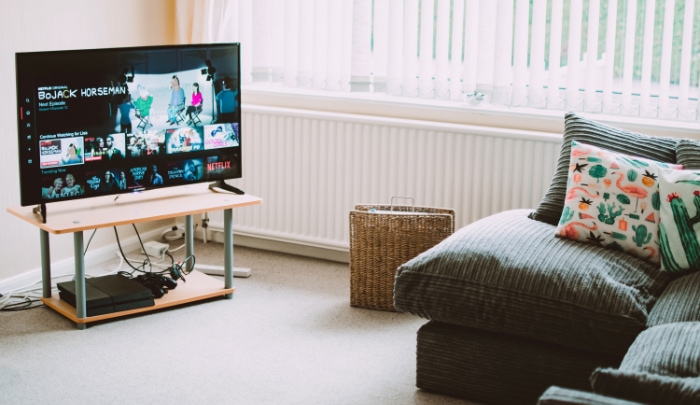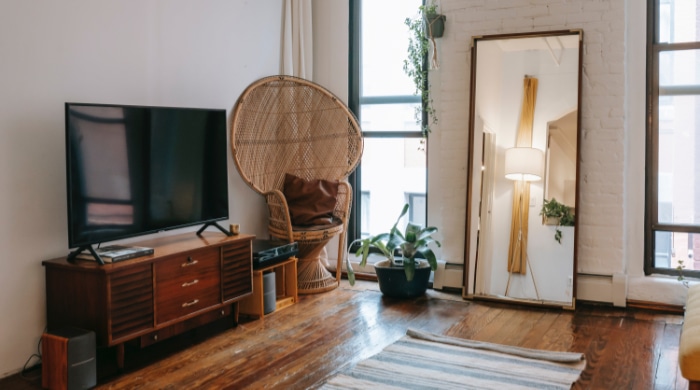Samsung TV Screen Too Dark? Here’s How to Fix It

Samsung has long been a trusted name in consumer electronics, and its TVs are no exception. With a wide range of models that boast sleek designs, innovative features, and stunning picture quality, it’s no wonder that Samsung TVs are a popular choice for many households.
However, as with any electronic device, users may occasionally encounter issues, and one common problem faced by Samsung TV owners is a screen that appears too dark. If you’re experiencing this issue, don’t worry – we’re here to help!
In this blog post, we will provide an in-depth look at the possible causes of a dark Samsung TV screen and offer practical troubleshooting tips to help you resolve the issue, ensuring that you can enjoy your favorite shows and movies with optimal picture quality.
Causes of a Dark Samsung TV Screen
Understanding the root cause of a dark Samsung TV screen is the first step toward finding an effective solution. There are several factors that could contribute to this issue, and we’ll discuss each one in detail below.
Energy-Saving Settings
Energy-saving features are designed to help reduce power consumption, but they may inadvertently lead to a darker screen.
Samsung TVs are often equipped with an Eco Sensor or Energy Saving Mode, which can automatically adjust the screen brightness based on the room’s ambient light or the TV’s power usage.
Incorrect Picture Mode
Samsung TVs come with a variety of preset picture modes that cater to different content types and viewing preferences.
Some of these modes, such as Dynamic or Sports, may prioritize other picture aspects over brightness, leading to a darker screen.
Faulty HDMI Cables or Connections
A damaged or loosely connected HDMI cable can lead to a range of picture-related issues, including a dark or dim screen.
Similarly, using a faulty HDMI port on your TV or connected device could result in a suboptimal viewing experience.
Outdated Firmware or Software
As with any electronic device, outdated firmware or software can cause various performance issues, including a dark TV screen.
Manufacturers regularly release updates to improve performance and fix bugs, so it’s important to ensure that your Samsung TV is running the latest version.
Hardware Issues
In some cases, a persistently dark screen may indicate an underlying hardware issue. This could involve the backlight, the power supply, or other internal components that require professional attention.
Troubleshooting and Solutions
Now that we’ve identified the possible causes of a dark Samsung TV screen, let’s explore various troubleshooting steps and solutions to help you restore your TV’s picture quality to its optimal state.
Disabling Eco Sensor
To disable this feature, follow these steps:
- Press the ‘Menu’ or ‘Settings’ button on your remote.
- Navigate to ‘System’ or ‘General.’
- Find ‘Eco Solution’ or ‘Eco Sensor’ and disable it.
Turning Off Energy Saving Mode (New Series)
To turn off the Energy Saving Mode, follow these steps:
- Press the ‘Menu’ or ‘Settings’ button on your remote.
- Navigate to the ‘System’ or ‘General’ option.
- Find and select ‘Eco Solution.’
- Choose the ‘Power Saving Mode’ option.
- Select the ‘OFF’ option to disable it.
Adjusting Brightness Manually
- Press the ‘Menu’ or ‘Settings’ button on your remote.
- Navigate to ‘Picture’ or ‘Display.’
- Select ‘Brightness’ and adjust the slider until you achieve the desired level.
Standard or Movie Mode
Switching to a different picture mode may help improve screen brightness. Standard or Movie modes often provide a more balanced viewing experience:
- Press the ‘Menu’ or ‘Settings’ button on your remote.
- Navigate to ‘Picture’ or ‘Display.’
- Select ‘Picture Mode’ and choose ‘Standard’ or ‘Movie.’
Customizing Settings for Optimal Brightness
If you prefer, you can customize the settings within your chosen picture mode:
- Press the ‘Menu’ or ‘Settings’ button on your remote.
- Navigate to ‘Picture’ or ‘Display.’
- Adjust settings such as ‘Brightness,’ ‘Contrast,’ and ‘Backlight’ to achieve your desired picture quality.
Inspecting Cables for Damage
Examine your HDMI cables for any signs of damage, such as bent pins or frayed wires. If you find any issues, replace the cable with a new one.
Ensuring Secure Connections
Make sure the HDMI cable is securely connected to both your TV and the source device. You may want to unplug and reconnect the cable to ensure a proper connection.
Testing with Different HDMI Ports
If the issue persists, try connecting your source device to a different HDMI port on your TV. This can help determine if the problem is related to a specific port.
Updating Firmware or Software

Regularly updating your Samsung TV’s firmware and software can help prevent and resolve various issues. To check for updates, follow these steps:
- Press the ‘Menu’ or ‘Settings’ button on your remote.
- Navigate to ‘Support’ or ‘Software Update.’
- Select ‘Update Now’ or ‘Check for Updates.’
If an update is available, follow the on-screen instructions to complete the installation process. Your TV may restart during the update, so be patient and avoid unplugging or turning off the TV while it’s updating.
Contacting Samsung Support
If you’ve tried all of the above troubleshooting steps and your Samsung TV screen remains too dark, it may be time to seek professional assistance. Contact Samsung Support to discuss your issue and receive guidance on the next steps to take.
Scheduling a Service Appointment
In some cases, a Samsung technician may need to examine your TV to identify and resolve any hardware issues. Schedule a service appointment, and be prepared to provide the TV’s model number and a detailed description of the issue.
A qualified technician can diagnose and repair any underlying problems, ensuring your Samsung TV returns to optimal performance.
Preventive Measures
Taking preventive measures can help you avoid encountering the issue of a dark Samsung TV screen in the future. By following the recommendations below, you can maintain the performance and longevity of your television.
Regular Cleaning
Dust and dirt can accumulate on your TV screen and vents over time. A dirty screen can cause visual distractions and impact the overall viewing experience, while dust accumulation on the vents may lead to potential overheating, which could affect the TV’s performance.
Avoiding Extreme Temperatures and Humidity
Extreme temperatures and high humidity can negatively impact your TV’s performance. Ensure that your Samsung TV is placed in an environment with stable temperature and humidity levels within the manufacturer’s recommendations.
Regularly Updating Firmware and Software
As mentioned earlier, regularly updating your TV’s firmware and software can help prevent and resolve various issues, including a dark screen. Make a habit of checking for updates periodically to ensure your Samsung TV is running the latest version and performing at its best.
Positioning the TV for Ideal Lighting Conditions
Place your TV in a location where it is not exposed to direct sunlight or harsh light sources, as this can impact the screen’s brightness and cause glare. If possible, position your TV so that it faces away from windows or other sources of bright light.
Adequate Ventilation
Ensure that your Samsung TV has adequate ventilation to prevent overheating. Make sure there is sufficient space around the TV, and avoid placing it in enclosed spaces or near heat sources.
By following these preventive measures, you can help minimize the risk of encountering a dark screen issue with your Samsung TV and enjoy a consistently high-quality viewing experience.
Conclusion
In conclusion, a dark Samsung TV screen can result from various factors, including energy-saving settings, incorrect picture mode, faulty HDMI cables or connections, outdated firmware or software, and hardware issues.
By following the troubleshooting steps and solutions outlined in this blog post, you can effectively address these potential causes and restore your TV’s picture quality.
Additionally, implementing preventive measures, such as proper care and maintenance, regular firmware and software updates, and ensuring optimal placement for your TV can help maintain its performance and prevent future issues.
By taking the time to understand and resolve the causes of a dark screen, you can enjoy a consistently high-quality viewing experience with your Samsung TV.


